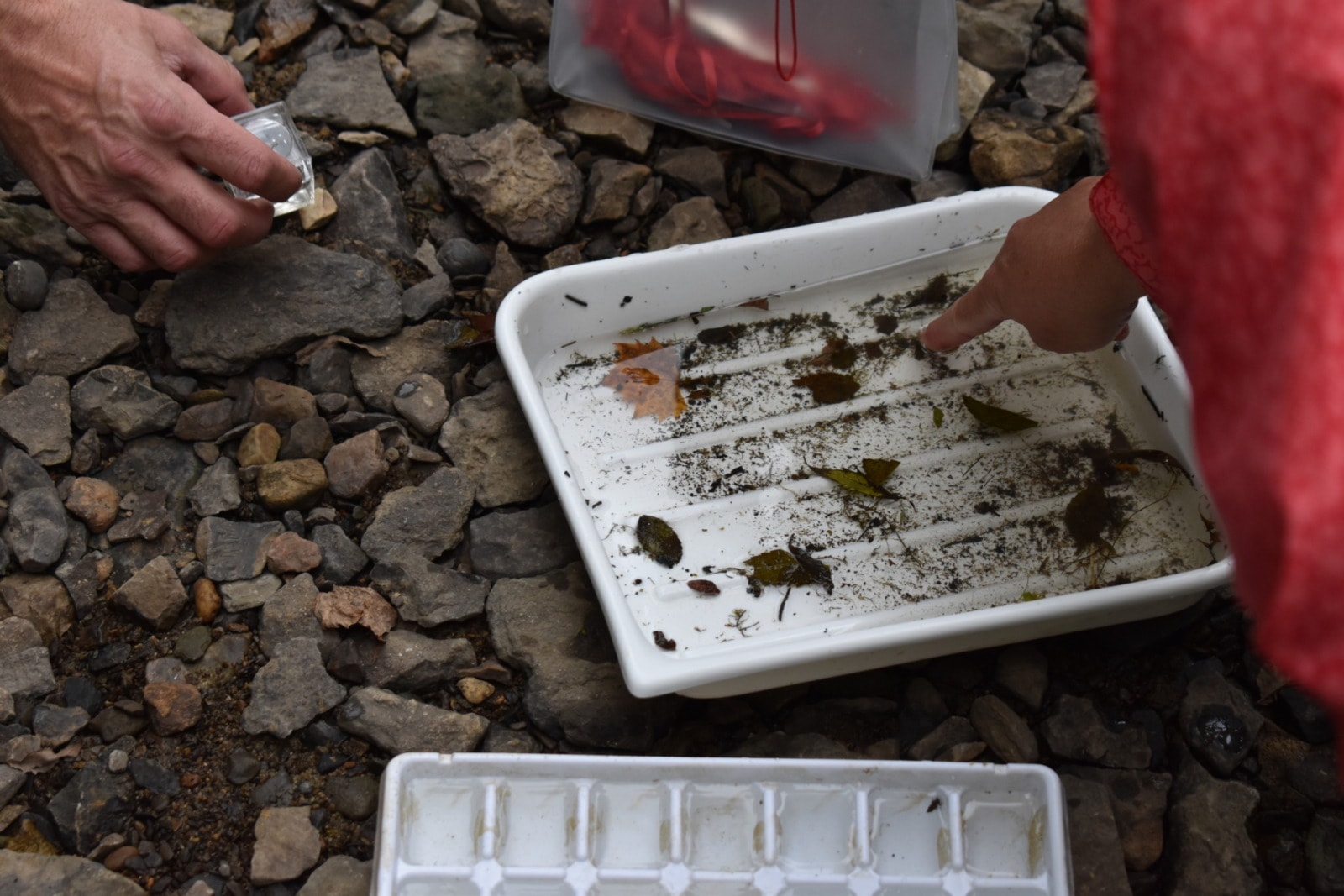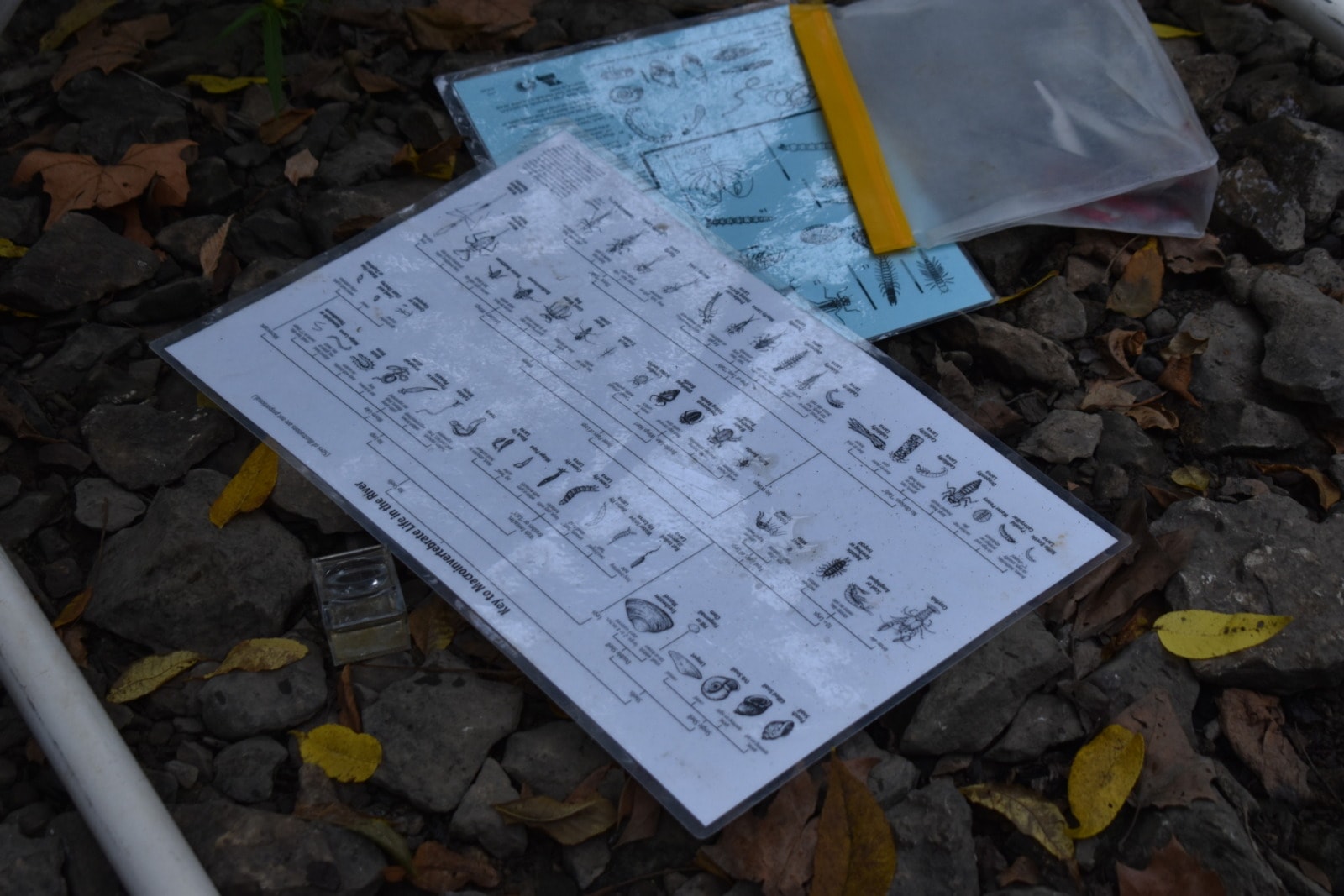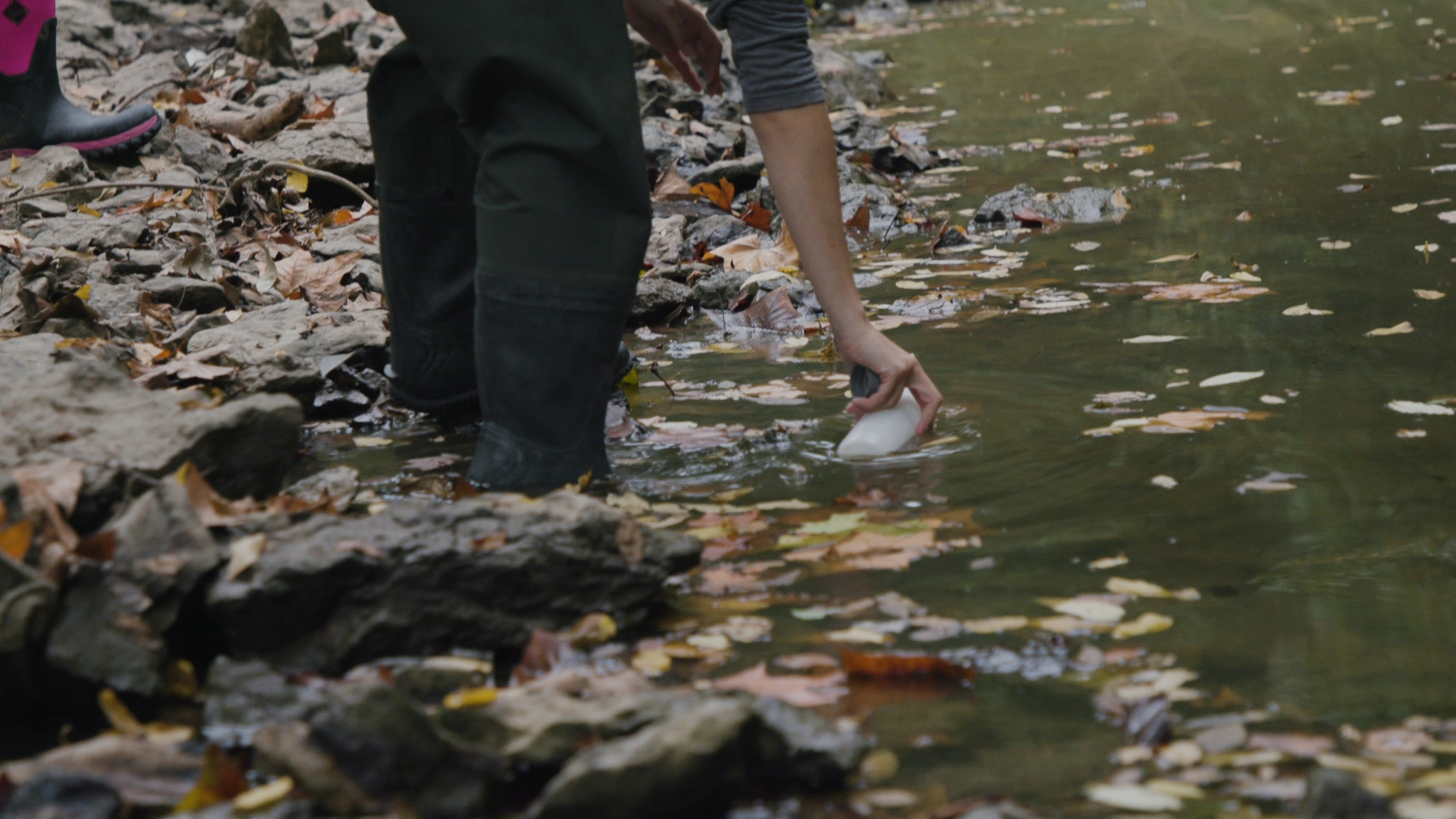A new policy brief from the United Nations argues that citizen science is crucial to global water security. Ground and surface water are facing increasing threats from pollution and climate change, and scientists need help. Citizen science, which is done by non-professional scientists, is part of the solution, according to the report.
And it’s happening throughout the Midwest.
Jim Hinds is a citizen scientist in Missouri, and part of his work involves shuffling around streams and picking through insects to identify what is living in the water. All the data he collects is written down and sent off to the Missouri Stream Team, a citizen science program from the Missouri Department of Conservation.
There are thousands of miles of streams in the state of Missouri, and not enough scientists to monitor them all, Hinds said.
Hinds himself doesn’t have a scientific background. Prior to retiring, he worked for years in graphic design, but always wondered what it would have been like had he chosen biology instead.
Now, Hinds volunteers with MST, which trains people like him to evaluate water quality in Missouri streams.
“Being that I always loved, as a kid, going out and playing in the stream — I thought ‘Well this will be fun,’” Hinds said.


Participants in the program learn how to measure water chemistry and identify benthic macroinvertebrates, which are animals visible to the naked eye that don’t have spines and live at the bottom of waterways. Worms, snails and dragonfly larvae are a few types of macroinvertebrates.
Hinds monitors two sites in Kansas City with other volunteers. Along with counting macroinvertebrates and measuring water chemistry, the volunteers also evaluate stream discharge — or the flow of the stream — and do a visual survey of the stream.
Hinds said he still has to use cheat sheets when testing water chemistry, which includes comparing the stream water to the general water quality standard for metrics like dissolved oxygen and temperature. Malcolm DeBroeck, volunteer education and citizen science assistant at MDC, said that while science can be intimidating, volunteers learn a lot in the field.
The organization uses the term “citizen science” to describe the work they do, said April Sevy, volunteer education and citizen science coordinator at MDC. Other terms for this kind of science are used by different individuals and organizations, Sevy said, such as community science, c-science, or participatory science.
Citizen science can provide scientists with large amounts of data that can help inform their research. For instance, the Missouri Stream Team program provides state scientists with baseline data that measures stream quality across Missouri over a long period of time. Craig Fuller, a fisheries biologist at MDC, uses this data in his own work.
“I am always looking for ways to collect more information,” Fuller said.
Citizen science has grown over the last few decades, particularly as digital technology has advanced. For instance, online social network iNaturalist, which provides people with the tools they need to identify and track animals and plants in their communities, has seen an increase of over one million users since last fall.


An interdisciplinary science
Community members had the opportunity to tag migratory monarchs at the Nahant Marsh Education Center just outside Davenport, Iowa, this September. This was the ninth annual tagging event at the center.
“In years past we’ve had anywhere between two to three hundred people (attend the event),” said Amy Loving, director of education at the Nahant Marsh Education Center.
Tagging monarchs helps scientists learn more about their migration patterns, Loving said.
The butterflies tagged at the event were also the result of community support. The monarchs were raised by Linda Prior, a community member from the Quad Cities area. Prior is also a contributor to a local Facebook group dedicated to rescuing monarchs.
“We need the community’s involvement as far as planting habitat and making sure you don’t use pesticides and stuff, so we can have a healthy environment – not just for the butterflies but for the bees as well,” Prior said.
Milkweed is paramount in the monarch butterfly cycle, since it’s the only plant they eat and lay their eggs on. However, pesticide use is killing them, reflected in the low number of monarchs at this year’s event. She usually brings 200; this year, she only raised 55.
“We’re encouraging folks to do things like plant milkweed and native plants that provide nectar sources all throughout the growing year,” Loving said. “Those are great ways that people in the community can help promote habitat in their own backyards.”
Scientists are stretched thin like everyone else, Loving said, so engaging community members in science helps get more boots on the ground.
Fuller echoed this sentiment, saying the “handful of scientists” at MDC don’t have the same capacity for collecting data when compared to the many Missourians who may be interested in the environment.
Sevy said that historically, there has been hesitation to use volunteer data because of concerns that it isn’t high quality.
“We have scientific methods to help drive our program, so that way we can have confidence in the data,” Sevy said. “And from my experience, our staff that have used our volunteer data are impressed with the work that our volunteers do.”
MST volunteers are provided with training to ensure they know what to look for and how to take a good sample, Fuller said. Communicating when the data is abnormal compared to historical data is another way to run quality checks on it, Fuller said.


A regional effort
Sevy said collaboration between and among citizen science projects occurs across states and other jurisdictions. This collaboration is important, particularly for measuring water quality, she said.
“It’s all feeding the same waters,” Sevy said. “If things are happening up in Iowa, that’s affecting our water here. And it’s not just the water that we’re playing in, it’s the water that we’re drinking.”
Sevy gave a presentation in Kentucky a year ago about another MDC citizen science project, Show Me Snails. The project asked community members to collect snails and send them in.
“It’s all about collaboration and kind of finding out what’s working in other states,” Sevy said.
Sevy also serves on the National Water Quality Council and meets with colleagues, who are based in places such as Wisconsin, Pennsylvania and Arizona, to collaborate.
Other types of citizen or community science programs can be found across the country.
NASA hosts a website dedicated entirely to citizen science projects. The U.S. Geological Survey collects personal accounts to measure earthquake impacts.
In Minnesota, volunteers can help collect information about loon numbers at more than 600 lakes in the state.
In addition to deepening the capacity to collect more data, citizen and community science serves as a learning opportunity, and can move individuals to become advocates for the environment, Sevy said.
“You don’t have to be a grown-up. You don’t have to have an education,” Sevy said. “Anyone can do science.” The water quality data collected by MST volunteers and information on how to get involved can be found on their website. Sevy also said data can be requested as they develop their new database. Information about citizen science programs at the Nahant Marsh Education Center can also be found on their website.
This story is a product of the Mississippi River Basin Ag & Water Desk, an independent reporting network based at the University of Missouri in partnership with Report for America, with major funding from the Walton Family Foundation. Estefanía Pinto Ruiz contributed to this story.
Julie Freijat is a Kansas City PBS/Flatland reporter and a Report for America corps member working with the Mississippi River Basin Ag & Water Desk. Her work is made possible, in part, through the generous support of the Ewing Marion Kauffman Foundation.
(Except for the headline, this story has not been edited by PostX News and is published from a syndicated feed.)

